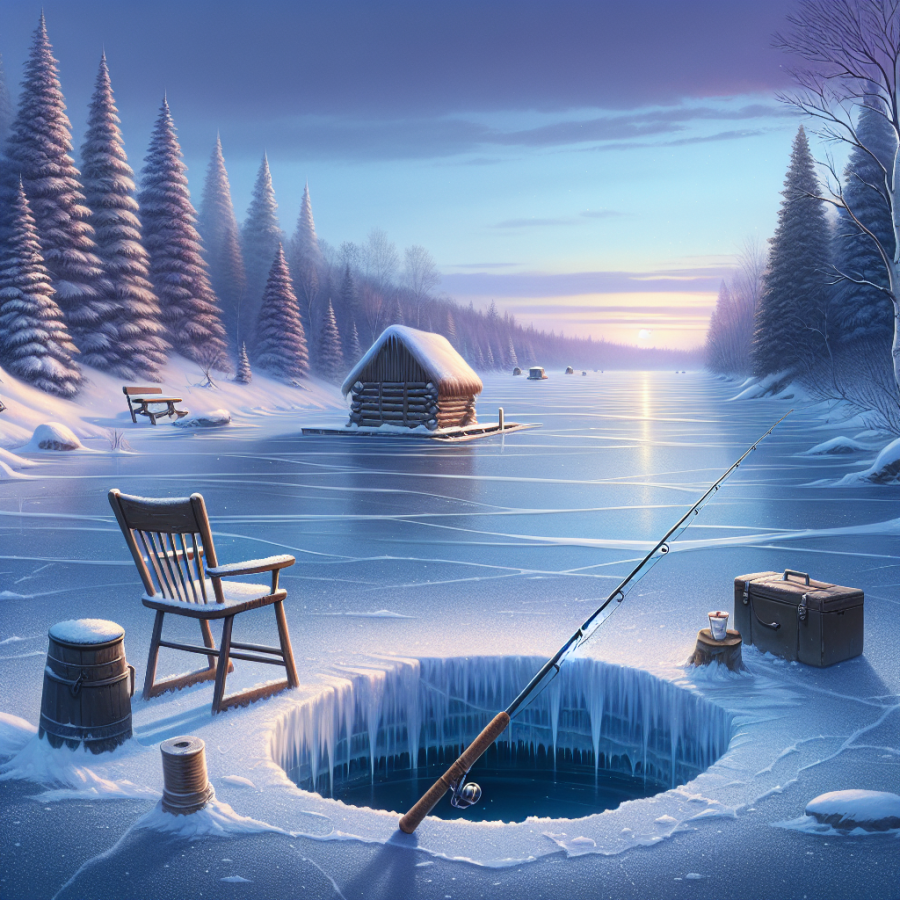Embracing the Chill: Essential Safety Tips for a Fun-Filled Ice Fishing Expedition
As you prepare for your trek onto the icy lakes, it's crucial to prioritize your safety to ensure a fun-filled ice fishing experience. Every year, countless anglarians anticipate the winter months to immerse themselves in the serenity and excitement of ice fishing. But before you drill your first hole and drop in a line, let's go over some vital safety tips to keep you, and your companions, secure during your ice fishing adventure.
First and foremost, understanding ice conditions is paramount. One can never be too careful when it comes to the thickness and quality of ice. Always check local ice condition reports and talk to seasoned ice fishers or bait shop owners to gather intelligence on the current state of the ice. As a rule of thumb, ice should be at least 4 inches thick to support a person on foot, 5-7 inches for snowmobiles and ATVs, and 8-12 inches for cars or small trucks, though local variations apply and it's always safer to err on the side of caution.
Next, never venture out alone. Ice fishing is an activity best enjoyed with a buddy. Not only does it make for a more enjoyable social outing, but it also means there is someone to call for help or assist if an unforeseen incident occurs. Share your fishing plans and locations with family or friends staying on shore in case emergency services need to be alerted.
Dress to protect. The right attire can make all the difference. Dress in layers starting with moisture-wicking materials closest to your skin, an insulating layer, and finish with a wind and waterproof outer layer. Pay special attention to extremities, as your fingers, toes, ears, and nose are more prone to frostbite. A high-quality pair of waterproof boots and thermal socks are essentials, as are insulated gloves and a warm hat.
Carrying the right gear can be a lifesaver, quite literally. Always take a fully charged cell phone wrapped in a water-resistant casing. Bring along safety items such as ice picks, which can help you claw your way back to solid ice in case you fall in. Wear a life vest beneath your outerwear for extra buoyancy, and consider bringing a portable shelter to guard against the elements.
Respect wildlife and the environment. Remember that you're a visitor in the natural habitats of many species. Keep the ecosystem intact by discarding any trash, leftover bait, or line fragments you may have.
Read also:
Speed Golf: The Thrilling Race on the Greens
Exploring the Icy Depths: Gear and Techniques for Ice Fishing Success
Ice fishing presents its own set of challenges and thrills, vastly different from any other form of angling. Venturing onto the frozen water necessitates not only a steely resolve but also the right gear and techniques to ensure a successful and safe experience.
When it comes to gear, an ice angler's tackle box should be adjusted for the cold and icy conditions. One essential item is the ice auger, which is used to bore holes through the ice. Augers come in hand-cranked models, which are quiet and labor-intensive, and power-driven versions, which save energy and time. The thickness of the ice dictates the type of auger you'll need; thicker ice requires a more robust auger.
Next, rods and reels designed for ice fishing are typically shorter to allow for better control when fishing through a hole in the ice. These compact rods enable precise jigging, a preferred technique for attracting fish under the ice. The reels should be smooth and well-suited for the lightweight lures commonly used in ice fishing.
The lures and bait used in ice fishing often mimic the small invertebrates and fish that make up the winter diet of predatory fish. Brightly colored jigs, spoons, and ice flies can be particularly effective. Moreover, live bait, such as minnows or waxworms, can be irresistible to fish like perch, bluegill, and crappie that are active beneath the ice.
One technique that is often utilized in ice fishing is called jigging. This involves repeatedly lifting and dropping the lure or bait to mimic the movement of prey. The action can vary from subtle twitches to more pronounced lifts, depending on the species targeted and their level of activity. Electronics like fish finders can be incredibly useful in locating fish and determining the right jigging technique to use.
Another critical element of ice fishing is mobility. Unlike open water fishing, where boats can move quickly to new spots, ice anglers need to be more strategic. Portable shelters, sleds to carry gear, and comfortable, insulated seating can make moving from hole to hole across the ice more efficient and comfortable.
In addition to the right gear, wearing appropriate clothing is crucial. Layering is key to managing body heat in the freezing conditions. A base layer that wicks away moisture, followed by insulating layers and topped with a waterproof and windproof shell, can keep you warm and dry.




